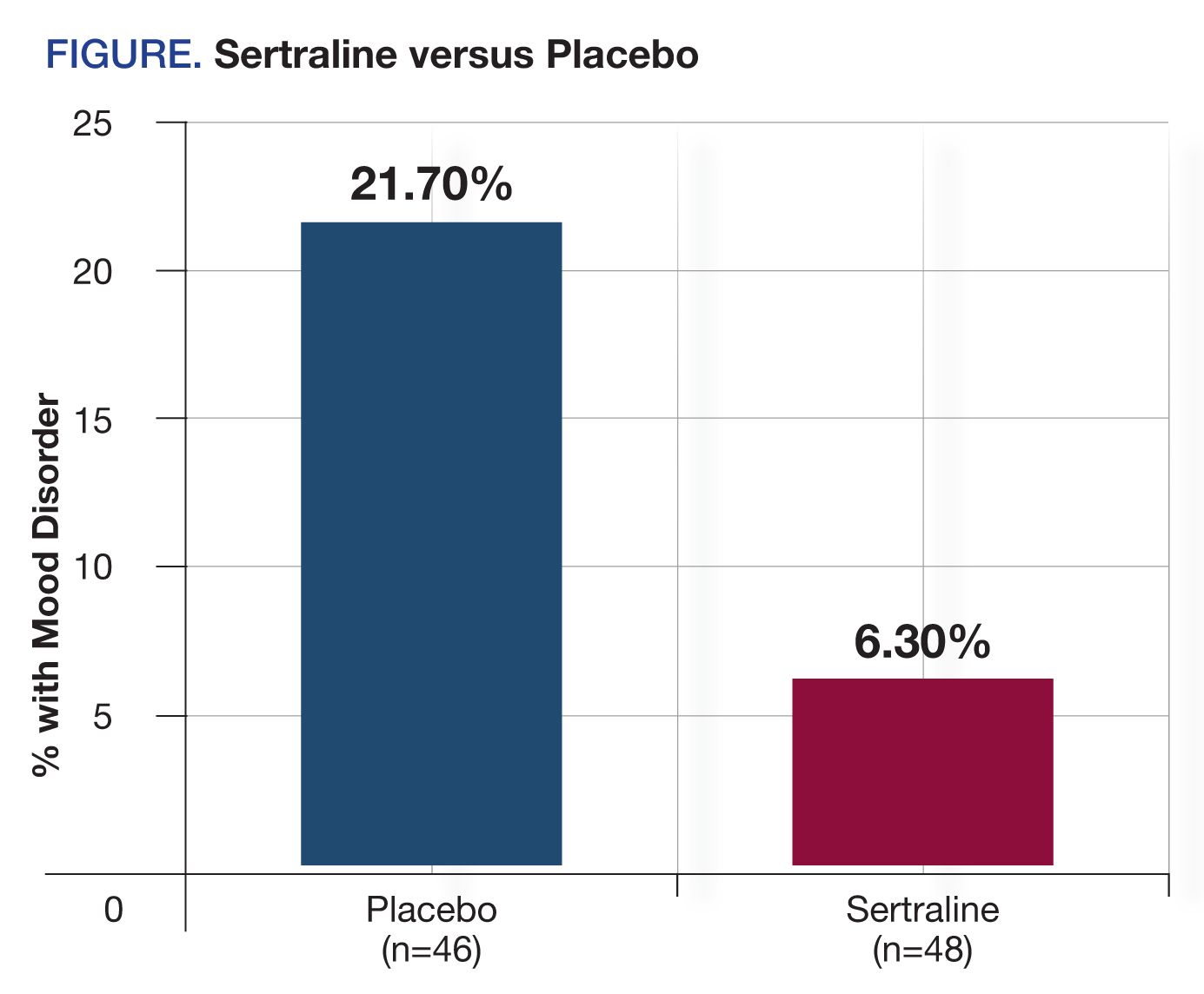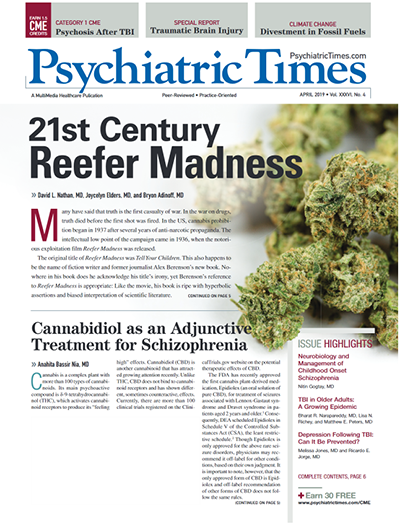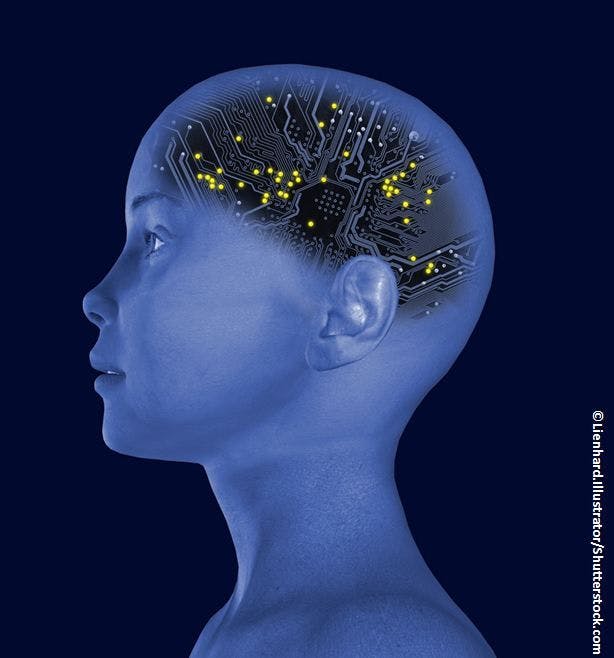Publication
Article
Psychiatric Times
Depression Following TBI Can It Be Prevented?
Author(s):
The chronic and relapsing course of TBI-associated depression poses a challenge to the management of afflicted patients.
©Shutterstock.com

FIGURE. Sertraline versus Placebo

Every year, 1.7 million people in the US sustain a traumatic brain injury (TBI), and nearly 1.1% of Americans live with a disability related to TBI.1 Psychiatric disorders frequently complicate the course of recovery from TBI and occur at rates exceeding those of the general population. Major depression is the most common psychiatric disorder following TBI, affecting an estimated 29.4% of patients in the first year post-injury alone.2 TBI-associated depression contributes to higher suicide risk, altered executive function, poorer social reintegration and vocational outcomes, and decreased quality of life.3
The chronic and relapsing course of TBI-associated depression poses a challenge to the management of afflicted patients. Two-thirds of patients depressed at 1-year post-injury remain so in the second year, and the risk of depression remains elevated for 20 to 30 years after the injury.3 In a small trial (N = 21) of citalopram’s efficacy to prevent relapse in patients with remitted TBI-associated depression, over half of the sample relapsed at a mean time of 6 months.4 The high prevalence, chronicity, and potentially irreversible consequences of post-TBI depression underscore the importance of developing interventions targeting this disorder.
Previous work in the field of TBI-associated depression has focused on treatment strategies. Conflicting results have been seen in randomized controlled trials (RCTs) examining the efficacy of pharmacotherapy for the treatment of TBI- associated depression. Results from a double-blind RCT of patients with TBI-associated depression who received 25 mg to 200 mg sertraline did not show a statistically significant difference in the severity of depressive symptoms compared with placebo after 12 weeks of treatment.5 RCTs of non-pharmacologic treatments have also yielded inconsistent results regarding their efficacy to treat TBI-associated depression.6
In general, preventive strategies are more effective than treatment interventions to decrease the burden of a disease. Our group published preliminary evidence supporting the efficacy of sertraline for the prevention of TBI-associated depression but preventive strategies for TBI-associated depression remain underdeveloped.7
Defining prevention
Clinicians may be most familiar with the concepts of primary, secondary, and tertiary prevention. Primary prevention refers to interventions protecting against a disease before its onset, whereas secondary prevention refers to early interventions aimed at preventing disease progression. Tertiary prevention focuses on strategies that reduce the morbidity of a disease after its onset.
Because of the challenges of applying this scheme to the prevention of psychiatric disorders, the Institute of Medicine Committee on the Prevention of Mental Disorders in 1994 recommended a new classification scheme encompassing universal, selective, and indicated preventive strategies. When applied to TBI- associated depression, this scheme emphasizes the prevention of a depressive episode before it begins.
Universal prevention refers to strategies targeting the entire population; in the case of TBI-associated depression, one example would be the enforcement of laws against driving under the influence to reduce the incidence of TBI and hence associated depression. Selective interventions target high-risk groups. Because patients with TBI are at risk for depression, administering an intervention to all patients with a TBI falls under this category. Finally, indicated prevention targets patients with early signs of a disorder, such as those with TBI who have early signs of mood disturbance.
Selective pharmacologic interventions have been shown to prevent depression in patients with other medical conditions conferring high rates of mood disorders. SSRIs have demonstrated efficacy in the prevention of depression following acute stroke and in patients with hepatitis C treated with interferon.7,8
A meta-analysis of 32 randomized controlled trials comprising 6214 participants of diverse age ranges and comorbidities found a 21% decrease in the incidence of major depression for participants exposed to preventive therapies compared with controls.9 Unfortunately, preventive strategies for TBI are lagging relative to other medical conditions.
Preventive interventions for TBI-associated depression
Few researchers have examined the efficacy of preventive interventions for TBI-associated depression as the primary outcome. Given the tolerability of sertraline in patients with TBI-associated depression, our group conducted a double-blind, placebo-controlled RCT examining the efficacy of medication for the selective prevention of TBI-associated depression.7
A unique feature of our study was the administration of a semi-structured interview to actively exclude participants with current depressive, anxiety, or psychotic disorders at the time of enrollment. Also, participants with histories of mood disorders were required to have been in remission for at least one year. Additional exclusion criteria included the use of antidepressants within 6 months prior to the injury; historical failure of an adequate trial of sertraline; or a history of adverse effects from sertraline that required its discontinuation.
Participants were randomized with a permutated blocks randomization scheme to sertraline, titrated over 10 days to 100 mg daily, or to placebo for 24 weeks. Participants were evaluated in-person at baseline, 2-weeks, 4-weeks, and every 4 weeks thereafter. A semi-structured interview was conducted over the phone at 6-, 10-, 14-, 18-, and 22-weeks. If a participant reported an anchor symptom for a depressive disorder in the previous 2 weeks, he or she was evaluated in-person with the same semi-structured interview. Participants ascertained to have a mood disorder by experienced psychiatrists were discontinued from the study and referred for routine psychiatric care.
The final randomized sample consisted of 94 participants, approximately two-thirds of whom had a mild-complicated or moderate TBI. The most common mechanisms of TBI in our sample were falls (48%) and car crashes (38%). Participants in the sertraline (n = 48) and placebo (n = 46) groups were similar in terms of demographics, injury severity, mechanisms of injury, cognitive functioning, disability, exposure to rehabilitation interventions, and measures of anxiety, apathy, and PTSD symptoms.
Over the course of the study, a depressive disorder developed in 3 participants (6.3%) in the sertraline group versus 10 participants (21.7%) (Figure). Intent-to-treat analysis revealed that the hazard of developing depression for participants receiving placebo was approximately 4 times that participants receiving sertraline (HR = 3.6, 95% CI, 1.1-16.2), Likelihood Ratio Test [LRT] Ï2 (1) = 4.6, P = .031). The number needed to treat (NNT) to benefit at 24 weeks was 5.9 (95% CI, 3.1-71.1). The treatment effect remained significant after controlling for Glasgow Coma Scale score, history of alcohol use disorders, and history of mood disorders.
All incident cases of depression had features of major depression. Although concurrent anxiety symptoms were common, these participants did not meet criteria for an anxiety disorder. Only one participant developed suicidal ideation in the placebo group. The odds of dry mouth (odds ratio, 7.2; 90% CI, 1.9-27.6; P = .01) and diarrhea (odds ratio, 2.3; 90% CI, 1.0-5.5; P = .10) were higher for participants receiving sertraline, but overall, sertraline was well-tolerated.
In a subgroup analysis of participants without an identified mood disorder (n = 67), sertraline did not significantly impact attention, working memory, episodic memory, executive control, inhibition, or processing speed compared to placebo. Interestingly, although SSRIs are thought to exacerbate apathy, the sertraline group showed a decrease in apathy symptoms as measured by the Apathy Evaluation Scale compared with the placebo group who showed an increase in apathy scores (F [1, 67] = 4.73; P = .033).
To our knowledge, the only other double-blind, placebo-controlled RCT of a pharmacologic intervention for the prevention of TBI-associated depression examined the effect of sertraline in a sample of patients with mostly severe TBI.10 In this study, participants were randomized to sertraline 50 mg (n = 49) or placebo (n = 50) for 3 months and were evaluated for depression at 3-, 6-, and 12-months post-enrollment. According to the intent-to-treat analysis, the cumulative incidence of depression (defined by a cutoff score of 6 on the 6-item version of the Hamilton Depression Scale) at 3-months follow-up was lower with sertraline compared with placebo (Ï2 5.16, P = .024). However, this difference was no longer significant at 12-months follow-up (Ï2 3.69; P = .055).
These discrepant findings may be explained by several methodological differences. For instance, the dose and duration of sertraline in the latter trial may have been insufficient. It is also plausible that the preventive effect of sertraline only occurs while taking the antidepressant. Consistent with our findings, however, was the lack of significant improvement on measures of concentration, processing speed, memory, or executive function in the sertraline group compared with placebo at 3 months.11
Prospective, controlled studies of non-pharmacological interventions are lacking.12 In one study by Bombardier and colleagues,13 7 telephone calls from a research care manager that addressed client-centered, real-time problems following discharge from inpatient rehabilitation significantly reduced depressive symptoms at 12-months relative to a control group. However, 29% of their sample had depression at baseline.13
Scheenen and colleagues14 compared a 5-session, cognitive behavioral therapy intervention to a telephone control in 84 patients with mild TBI and at least 3 post-concussive complaints. The intervention did not have a statistically significant effect on the primary outcome of return-to-work or on the severity of depression and anxiety symptoms at 6 or 12 months. Further studies of non-pharmacological interventions are warranted.
Potential barriers to prevention
The success of a preventive intervention depends on its ease of administration and acceptability to patients and clinicians. The acceptability of pharmacologic interventions may be hindered by concern about adverse effects. Results from our sertraline study showed modestly increased odds of dry mouth and diarrhea compared with placebo.7 However, to our knowledge, more serious adverse effects of SSRIs have not been reported in treatment and preventive studies of patients with TBI, including hyponatremia, gastrointestinal bleeds, falls, fractures, hypomania, or mania. The risks of SSRIs must still be considered on an individualized basis.
It is unclear how comorbid psychiatric, neurologic, and other medical complications may influence the safety, tolerability, and overall impact of strategies aimed to prevent depression in patients with TBI. In our study of sertraline, 16% of potential participants were ineligible because of dementia, cerebrovascular illness, or a severe complicating medical illness. Another 27% of candidates were excluded because of a recent history of alcohol or drug dependence, even though alcohol and premorbid substance are important risk factors for TBI and TBI-associated depression.7 The efficacy of preventive interventions in these and other special TBI populations remains unknown.
The presence of premorbid mood disorders and antidepressant exposure may also blur the distinction between prevention and treatment. In our study, 16% of patients screened for eligibility were excluded due to current mood or anxiety disorders or use of antidepressant medications within the 6 months prior to injury. However, 22% of our randomized patients had a remote history of a single episode of depression, and they too benefited from sertraline. Since pre-existing mood and anxiety disorders are risk factors for the development of TBI-associated depression, future studies must address the effect of preventive interventions on the course of chronic mood disturbances.
Finally, a proportion of patients may decline to add another medication to their already burdensome regimen. In our study on sertraline, 36% of eligible subjects declined to participate, because they were unwilling to add another medication or thought that depression would not occur.7 The potential for adverse effects and burdensome medication regimens highlight the need for more effective, non-pharmacologic interventions, although these interventions require the availability of trained personnel.
Conclusion
Can depression following TBI be prevented? Our study of sertraline for the prevention of TBI-associated depression suggests that it can. However, our findings must be replicated in larger, more representative samples of patients with TBI to ensure the safety and efficacy of this or other SSRIs. The development of feasible, non-pharmacologic interventions is greatly needed. At this time, there is insufficient evidence to recommend the implementation of any pharmacologic or non-pharmacologic intervention for the prevention of TBI-associated depression, and the safety of prophylactic SSRI therapy for high-risk patients must be considered on a case-by-case basis.
Disclosures:
Dr Jones is Assistant Professor, and Dr Jorge is Professor and Acting Director, Beth K. and Stuart C. Yudofsky Division of Neuropsychiatry, Menninger Department of Psychiatry and Behavioral Sciences, Baylor College of Medicine, Houston, TX.
The authors report no conflicts of interest concerning the subject matter of this article.
References:
1. Faul M, Coronado V. Epidemiology of traumatic brain injury. Handb Clin Neurol. 2015;127:3-13.
2. Ponsford J, Alway Y, Gould KR. Epidemiology and natural history of psychiatric disorders after TBI. J Neuropsychiatry Clin Neurosci. 2018;30:262-270.
3. Jorge RE, Arciniegas DB. Mood disorders after TBI. Psychiatr Clin North Am. 2014;37:13-29.
4. Rapoport MJ, Mitchell RA, McCullagh S, et al. A randomized controlled trial of antidepressant continuation for major depression following traumatic brain injury. J Clin Psychiatry. 2010;71:1125-1130.
5. Fann JR, Bombardier CH, Temkin N, et al. Sertraline for major depression during the year following traumatic brain injury: a randomized controlled trial. J Head Trauma Rehab. 2017;32:332-342.
6. Gertler P, Tate RL, Cameron ID. Non-pharmacological interventions for depression in adults and children with traumatic brain injury. Cochrane Database Syst Rev. 2015:CD009871.
7. Jorge RE, Acion L, Burin DI, Robinson RG. Sertraline for preventing mood disorders following traumatic brain injury: a randomized clinical trial. JAMA Psychiatry. 2016;73:1041-1047.
8. Udina M, Hidalgo D, Navines R, et al. Prophylactic antidepressant treatment of interferon-induced depression in chronic hepatitis C: a systematic review and meta-analysis. J Clin Psychiatry. 2014;75:e1113-1121.
9. van Zoonen K, Buntrock C, Ebert DD, et al. Preventing the onset of major depressive disorder: a meta-analytic review of psychological interventions. Int J Epidemiol. 2014;43:318-329.
10. Novack TA, Banos JH, Brunner R, ET AL. Impact of early administration of sertraline on depressive symptoms in the first year after traumatic brain injury. J Neurotrauma. 2009;26:1921-1928.
11. Banos JH, Novack TA, Brunner R, Renfroe S, Lin HY, Meythaler J. Impact of early administration of sertraline on cognitive and behavioral recovery in the first year after moderate to severe traumatic brain injury. J Head Trauma Rehab. 2010;25:357-361.
12. Jones M, Acion L, Jorge RE. What are the complications and emerging strategies for preventing depression following traumatic brain injury? Expert Rev Neurother. 2017;17:631-640.
13. Bombardier CH, Bell KR, Temkin NR, et al. The efficacy of a scheduled telephone intervention for ameliorating depressive symptoms during the first year after traumatic brain injury. J Head Trauma Rehab. 2009;24:230-238.
14. Scheenen ME, Visser-Keizer AC, de Koning ME, et al. Cognitive behavioral intervention compared to telephone counseling early after mild traumatic brain injury: a randomized trial. J Neurotrauma. 2017;34:2713-2720.
































